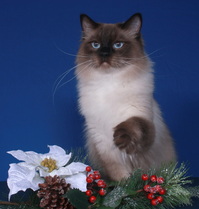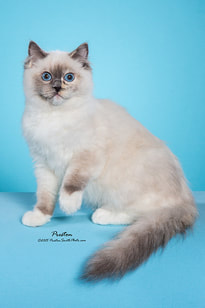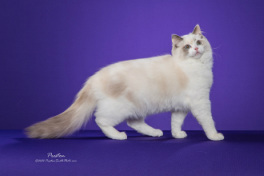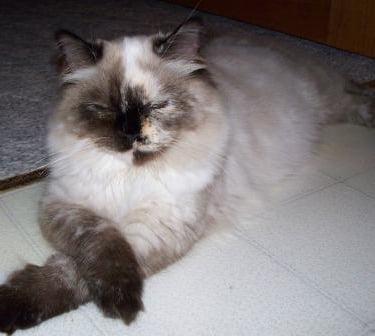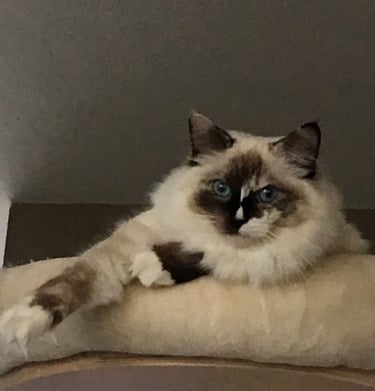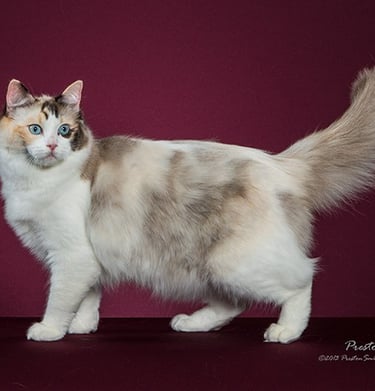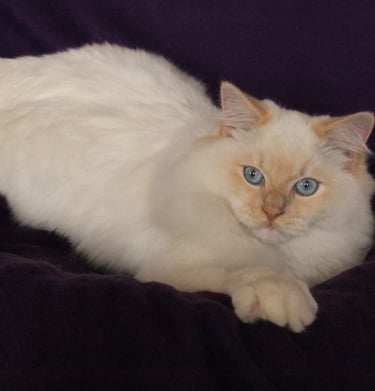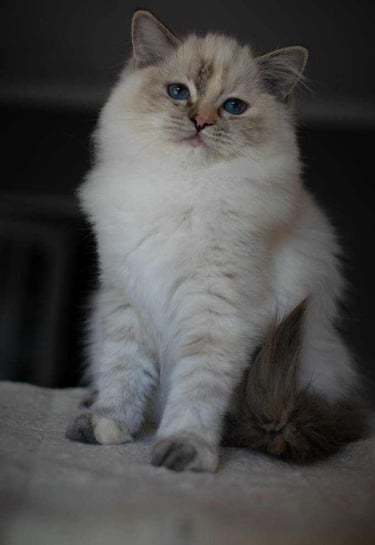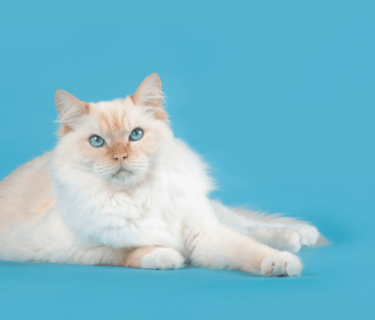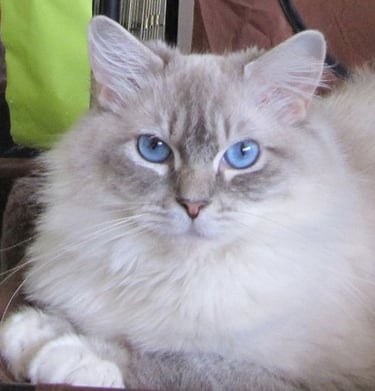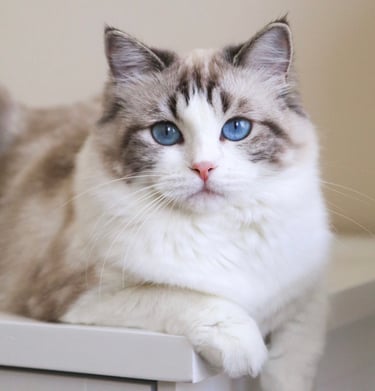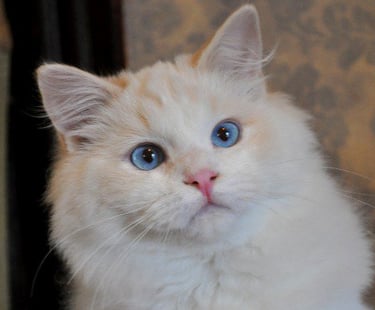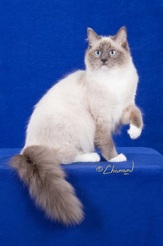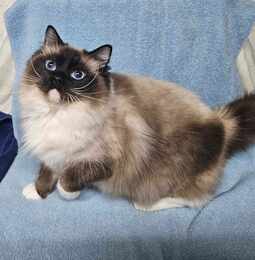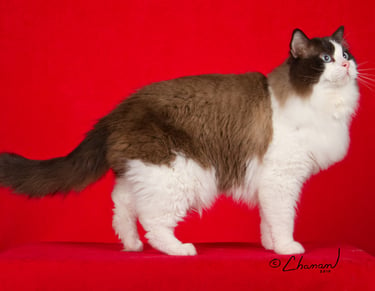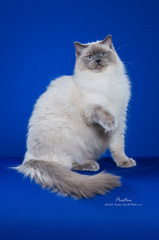

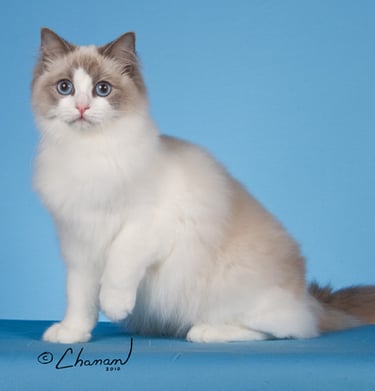

Ragdoll Colors & Patterns
Ragdolls are colorpoint cats, meaning their color is darker at the extremities. They also come in three white patterns:
Point – No white at all.
Mitted – White mittens on the front paws, white back feet, and a white stripe from the belly to the bottom. Some may also have a touch of white on their face.
Bicolor – An inverted white "V" on the face, white extending up all four legs, and a white or colored body.
Base Colors
We produce Ragdolls in two base colors:
Blue – A soft gray shade. Seal – A rich brown shade.
Additional Patterns & Genetics
Torties & Flames (Red Gene) – Controlled by the sex-linked O gene:
Torties (like calicos) are always female.
Flames (red-colored Ragdolls) can be male or female, though females are rarer since they require a tortie female and a red male to produce them.
Lynx Pattern – This pattern lightens the base color and adds distinctive striping for a more defined, wildcat-like look.

